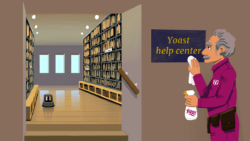Inclusive language: Disability and neurodiversity
When creating inclusive content, it’s important to consider the way we write about disability and neurodiversity. The language people use when talking about disability and neurodiversity can be patronizing or dismissive of people’s lived experiences. Using certain words may also unintentionally minimize or ignore the realities of disability and neurodiversity. It’s more inclusive if we talk about these topics in a way that’s considerate and factual. In this article, we’ll give you some tips on using inclusive language concerning disability and neurodiversity.
Note: The inclusive language analysis is opt-in
The inclusive language analysis is opt-in, so it won’t be activated by default. You can use it if you want to write inclusive content for your audience. You can activate it by going to Yoast SEO > General > Features and toggling the inclusive language analysis switch. The SEO and readability analyses won’t change if you choose not to use this new feature. Would you like to share feedback about the inclusive language analysis? Let us know what you think!
Table of contents
How to use inclusive language related to disability and neurodiversity
Types of disabilities
There are many types of disability and neurodiversity, and these can affect people physically, mentally, and/or socially. People who are affected can face barriers preventing them from participating fully in various aspects of life, due to inaccessible environments and non-inclusive activities. Moreover, some people view disability and neurodiversity as medical problems. However, sometimes society simply fails to accommodate everyone’s needs. For instance, there’s nothing inherently wrong with left-handed people, but they face additional barriers in a right-handed society.
How to refer to (people with) disabilities and neurodiversity
Person-first, or identity first?
Neurodiverse people and people with disabilities are sometimes described using labels, and these labels can be harmful in a variety of ways. Some labels suggest that a condition someone has is their defining feature; for instance, to call someone handicapped makes it sound as if their disability is the sum total of their being. Instead of labeling a person by their condition, it can be more sensitive to acknowledge them as a person who has a particular condition. This approach is known as person-first language (PFL).
Not everyone feels positive about person-first language, though. In fact, some disabled people prefer identity-first language (IFL). They feel that PFL actually tries to separate a person from their disability and that it implies having a disability is a bad thing. Many disabled people are proud of their identity; being disabled isn’t anything to be ashamed about.
Whether person-first language or identity-first language is considered more correct or acceptable depends on who you’re talking to. But you don’t necessarily need to choose between these two stances. You can also vary your writing and switch between approaches, using PFL sometimes and IFL at other times.
Our inclusive language checks might prompt you to use person-first language, and we totally understand if you disagree with that. If you want to write inclusive content, the most important thing is to be thoughtful about the way you refer to disabled or neurodivergent people. Whether you say people with disabilities or disabled people, these both still sound a lot more considerate than the disabled.
Examples:
- Non-inclusive: the disabled.
- Inclusive: people with disabilities, or disabled people.
- Non-inclusive: an alcoholic.
- Inclusive: a person with alcohol use disorder.
Avoid offensive and derogatory terms
Labels like imbecile and retard, are especially harmful because they have become inappropriately used as insults by some people. Naturally, these terms should be avoided in all circumstances if you want your language to be inclusive.
Avoid terms that reflect misconceptions/stigma around disability
Disabled and neurodivergent people must often deal with stigma and misconceptions that make life more difficult for them. For instance, the label wheelchair bound implies that wheelchair users can never leave their wheelchairs. In reality, many wheelchair users are capable of standing or walking sometimes.
Avoid misusing terms related to disability or neurodivergence
Often, people use conditions or symptoms as metaphorical (or hyperbolic) descriptions of non-disabled and neurotypical people, behaviors, or situations. Particularly common examples are the words crazy and insane; these words are frequently used to describe things considered to be nonsensical, unexpected, or outrageous. Another example is when people say they are OCD about something, or something will trigger their OCD, when really they mean they are fussy or perfectionistic.
When you use words like these inappropriately, it can minimize or trivialize the experiences of people who have a particular condition or symptom. Take care to avoid using specific, sensitive terms in a way that ignores their true meaning.
Examples:
- Non-inclusive: schizophrenic.
- Inclusive: of two minds, chaotic, or confusing.
- Non-inclusive: fell on deaf ears.
- Inclusive: was not addressed.
- Non-inclusive: lame.
- Inclusive: boring, uninteresting, uncool.
Learn more
You can find out more about inclusive language for disability and neurodiversity with these resources:
- Disability (World Health Organization)
- The Social Model of Disability Explained | Sarah Buder & Rose Perry, Ph.D. (Social Creatures)
- I’m disabled. That’s not a bad thing. | Tinu Abayomi-Paul (Medium)
- Why Person-First Language Doesn’t Always Put the Person First | Emily Ladau (Think Inclusive)
- Euphemisms for Disability are Infantalizing (crippledscholar)
- How “Differently Abled” Marginalizes Disabled People (Autistic Hoya)
- For the Last Time: Mental illnesses Are Not Adjectives (Let’s Queer Things Up!)


